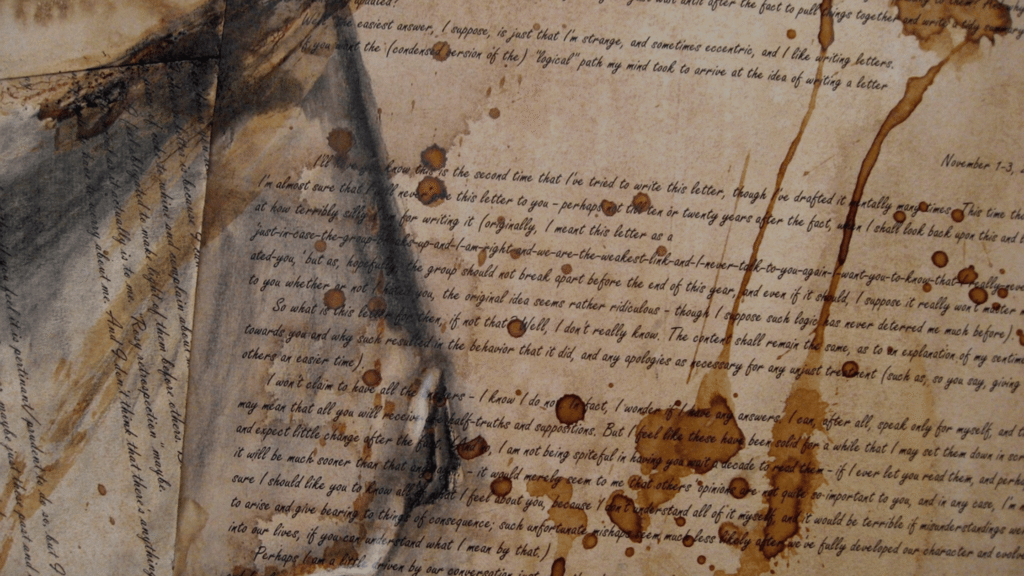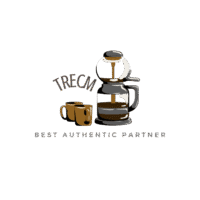Imagine adding a touch of vintage charm to your next craft project or letter by giving it a coffee-stained effect. In this article, we will show you how to easily achieve this beautifully aged and intriguing look on paper. Whether you’re an avid scrapbooker, a DIY enthusiast, or simply looking to add a unique twist to your handwritten notes, this step-by-step guide will help you master the art of coffee staining paper. So grab your favorite cup of joe and let’s get started!
Materials Needed
To coffee stain paper, you will need a few materials to get started. Make sure you have the following items ready before you begin:
Coffee
First and foremost, you will need a fresh cup of coffee. It can be any type of coffee you prefer, whether it’s a dark roast, medium roast, or even flavored coffee. The choice is yours!
Water
You will also need some water to dilute the coffee and adjust its strength according to your preference. Make sure you have a clean source of water nearby.
Bowl
A bowl will be used as a container to mix the coffee and water together. Choose a size that can hold enough liquid for the amount of paper you plan to stain.
Coffee filters or cheesecloth
To filter out any coffee grounds or impurities, coffee filters or cheesecloth will come in handy. They will ensure a smooth and clean coffee mixture for staining the paper.
Measuring cup
For precise measurements, a measuring cup is essential. It will help you determine the exact amounts of coffee and water needed to achieve the desired strength.
Paintbrush
A paintbrush will be used to apply the coffee mixture onto the paper. Choose a brush size that suits the detail and coverage you want to achieve.
Paper towels
Paper towels serve two purposes in this process. They can be used to clean any spills or messes, and they will also be used for drying the coffee-stained paper later on.
Baking sheet
A baking sheet is optional but can be useful in the later stages of the coffee staining process. It will be used for baking the paper, which can enhance the appearance and durability of the final result.
Optional: Tea bags or instant coffee
If you want to experiment with different effects or add variations to your coffee staining, you can consider using tea bags or instant coffee as alternatives to regular coffee. They can create unique colors and textures in the final product.
Now that you have all your materials ready, let’s move on to preparing the coffee mixture.
Preparing the Coffee Mixture
Brewing the coffee
Start by brewing a fresh cup of coffee using your preferred method. Whether you use a coffee machine, pour-over, or any other brewing method, make sure you have a strong and flavorful cup of coffee ready.
Adjusting the strength
After brewing the coffee, you may find that the initial strength is too intense for your liking. In that case, you can dilute it with some water. Begin by adding small amounts of water while stirring the coffee until you achieve the desired strength.
Filtering the coffee
To ensure a smooth and clean coffee mixture, it’s important to filter out any coffee grounds or impurities. Place a coffee filter or cheesecloth over your bowl and carefully pour the brewed coffee into the bowl. The filter will catch any unwanted particles and leave you with a clear liquid.
With your coffee mixture prepared, it’s time to move on to selecting and preparing the paper.
Selecting and Preparing the Paper
Choosing the paper
When it comes to coffee staining paper, not all types of paper will yield the same results. It’s best to choose a paper that is absorbent and has a smooth surface. Some recommended options include watercolor paper, cardstock, or even plain printer paper. Avoid using glossy or coated paper, as they may not absorb the coffee properly.
Trimming the paper
If necessary, trim the paper to your desired size. Ensure that the paper fits comfortably within your workspace and is large enough to accommodate the coffee staining process.
Preparing the workspace
Before moving forward, it’s important to prepare your workspace to avoid any mess or damage. Lay down some paper towels or a protective covering on your work surface to catch any spills or drips. It’s always better to be safe than sorry!
Now that your workspace is set up, let’s explore the different coffee staining methods you can use.
Dipping Method
The dipping method involves submerging the paper into the coffee mixture to achieve an overall stain. This technique is great for creating a consistent and aged appearance.
Setting up the workspace
Place your coffee mixture bowl next to a clean, flat surface. Ensure that there is enough room for the paper to lie flat without overlapping or crumpling.
Dipping the paper
Gently dip the paper into the coffee mixture, ensuring that both sides are evenly coated. You can hold the paper by its edges or use a pair of tongs to avoid getting your hands dirty.
Removing excess coffee
Once the paper is fully coated, carefully lift it out of the coffee mixture, allowing any excess liquid to drip back into the bowl. Hold the paper vertically for a few seconds to let the excess coffee drip off.
To achieve a lighter color or a more subtle effect, you can lightly dab the paper with a paper towel to remove additional coffee.
The dipping method is simple yet effective. However, if you prefer a more controlled and artistic approach, you might want to try the sponging method.
Sponging Method
The sponging method involves using a sponge to apply the coffee mixture onto the paper. This technique allows for greater control and versatility in creating different patterns and textures.
Setting up the workspace
Similar to the dipping method, set up your workspace with the coffee mixture bowl nearby and the paper laid flat. Place a clean sponge next to the bowl.
Preparing the sponge
Before using the sponge, dampen it slightly with water and then squeeze out any excess moisture. This will allow the sponge to absorb the coffee mixture evenly and prevent it from becoming too saturated.
Applying coffee with the sponge
Dip the damp sponge into the coffee mixture, ensuring that it absorbs an even amount of liquid. Lightly press the sponge onto the paper, moving in circular motions or gentle strokes to create your desired patterns and coverage.
Feel free to experiment with different pressure levels and sponge textures to achieve unique effects. This method is more hands-on and can result in beautiful and intricate designs.
If you’re looking for a more precise and detailed approach, the paintbrush method might be just what you need.
Paintbrush Method
The paintbrush method allows for precise application of the coffee mixture, making it ideal for creating fine lines, shapes, or lettering. This technique gives you more control over the intensity and placement of the coffee stain.
Setting up the workspace
Arrange your workspace with the coffee mixture bowl within reach and the paper positioned flat. Have a clean paintbrush ready nearby, ensuring that it is suitable for the level of detail you want to achieve.
Preparing the paintbrush
Before using the paintbrush, dampen it with water and then pat it dry with a paper towel. This will ensure that the brush doesn’t dilute the coffee mixture too much and maintains its integrity.
Applying coffee with the paintbrush
Dip the dry paintbrush into the coffee mixture and use it to paint directly onto the paper. You can create strokes, and lines, or even paint an entire image if you’re feeling artistic. Take your time and enjoy the process of bringing your ideas to life with coffee.
With the paintbrush method, you can create intricate and personalized designs on your coffee-stained paper. Now, let’s explore the baking methods to enhance the final result.
Baking Method: Oven
Using the baking method can help set the coffee stain and give the paper a more vintage and aged appearance. This technique is perfect for achieving a classic and rustic look.
Setting up the workspace
Preheat your oven according to the instructions on the paper package. While the oven is preheating, place the coffee-stained paper on a baking sheet lined with parchment paper or a silicone mat.
Coating the paper with coffee
Ensure that the coffee-stained paper is evenly coated with the coffee mixture. Use a paintbrush, sponge, or the dipping method to apply additional coffee if needed. You want the paper to be fully saturated without becoming overly wet.
Baking the paper
Once the oven reaches the desired temperature, carefully slide the baking sheet with the coffee-stained paper onto the middle rack. Allow the paper to bake for about 5-10 minutes, or until it is completely dry and crisp.
Keep a close eye on the paper during the baking process to prevent it from burning or curling. Once it is thoroughly dried, remove the baking sheet from the oven and let the paper cool before handling.
If you prefer a faster and more convenient baking method, you can utilize your microwave instead.
Baking Method: Microwave
Microwaving the coffee-stained paper is a quick and efficient way to dry it and achieve similar results to the oven method. This technique is ideal for those who want to save time without compromising the vintage appearance.
Setting up the workspace
Place the coffee-stained paper on a microwave-safe plate or tray. Ensure that the surface is clean and free of any food particles or residues.
Coating the paper with coffee
Just like in the oven method, make sure the coffee-stained paper is evenly coated with the coffee mixture. Use a brush, sponge, or the dipping method to apply more coffee if necessary.
Microwaving the paper
Carefully place the plate with the coffee-stained paper in the microwave. Set the microwave to a low power setting, such as 30-50% power, and microwave the paper in short intervals of 15-20 seconds.
After each interval, check the paper for any signs of curling or burning. If necessary, flip the paper over to ensure even drying. Continue microwaving in short bursts until the paper is completely dry.
Just like that, your coffee-stained paper is now ready for the next step: experimenting with different effects.
Experimenting with Different Effects
Coffee staining paper doesn’t have to be limited to a single approach. You can play around with various techniques and materials to achieve different effects and personalize your creations.
Using different concentrations of coffee
Varying the strength of the coffee mixture can result in different shades and hues on the paper. Experiment with diluting or concentrating the coffee to achieve lighter or darker tones. This can add depth and dimension to your coffee-stained creations.
Adding other substances
If you want to get even more creative, you can consider adding a touch of other substances to your coffee mixture. You can experiment with adding a drop of vanilla extract, cinnamon, or even a hint of food coloring to create unique and aromatic variations.
Applying multiple coffee layers
For a more intense and layered look, don’t hesitate to apply multiple coats of coffee onto the paper. Allow each layer to dry before adding the next one. This technique can create a rich and textured appearance that’s reminiscent of aged parchment.
Now that you’ve experimented with different effects, it’s time to move on to the final steps: drying and finishing your coffee-stained paper.
Drying and Finishing
Drying the coffee-stained paper
After you’ve achieved the desired effects and patterns on your coffee-stained paper, it’s important to let it dry completely. Lay the paper flat on a clean surface or hang it up to air dry. Depending on the ambient temperature and humidity, drying may take several hours to a day.
Flattening the paper
If your coffee-stained paper has curled or wrinkled during the drying process, you can easily flatten it. Place the paper between two clean, heavy objects, such as books or cutting boards, and leave them stacked overnight. The weight will gradually flatten the paper, leaving you with a smooth and ready-to-use surface.
Optional: Enhancing the vintage look
If you want to give your coffee-stained paper an even more authentic vintage look, you can consider adding some additional elements. You can lightly crumple the paper and gently flatten it again to create subtle creases and wrinkles. Additionally, you can lightly burn the edges of the paper with a candle or matchstick to mimic the aging process.
Remember to handle any burning with caution and only do so in a well-ventilated area while taking proper safety measures.
As you can see, coffee staining paper is a fun and creative way to add a touch of uniqueness and nostalgia to your projects. Whether you’re making personalized stationery, vintage-inspired artwork, or even themed party invitations, the possibilities are endless. So grab your materials, enjoy a cup of coffee, and let your creativity flow as you create beautiful, coffee-stained masterpieces.



